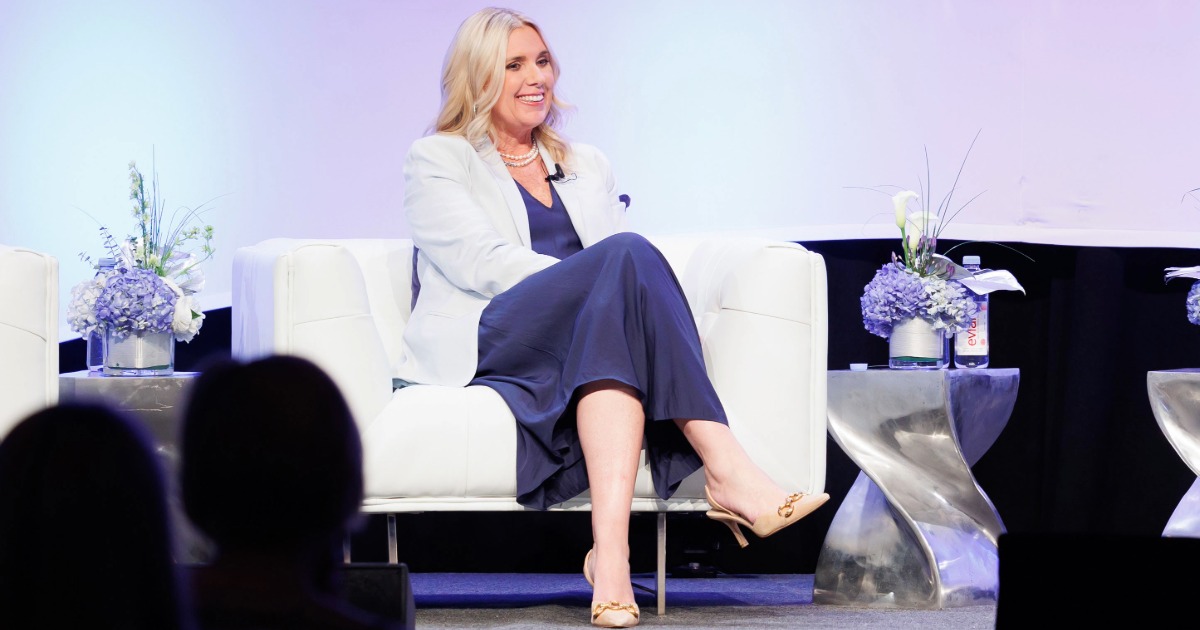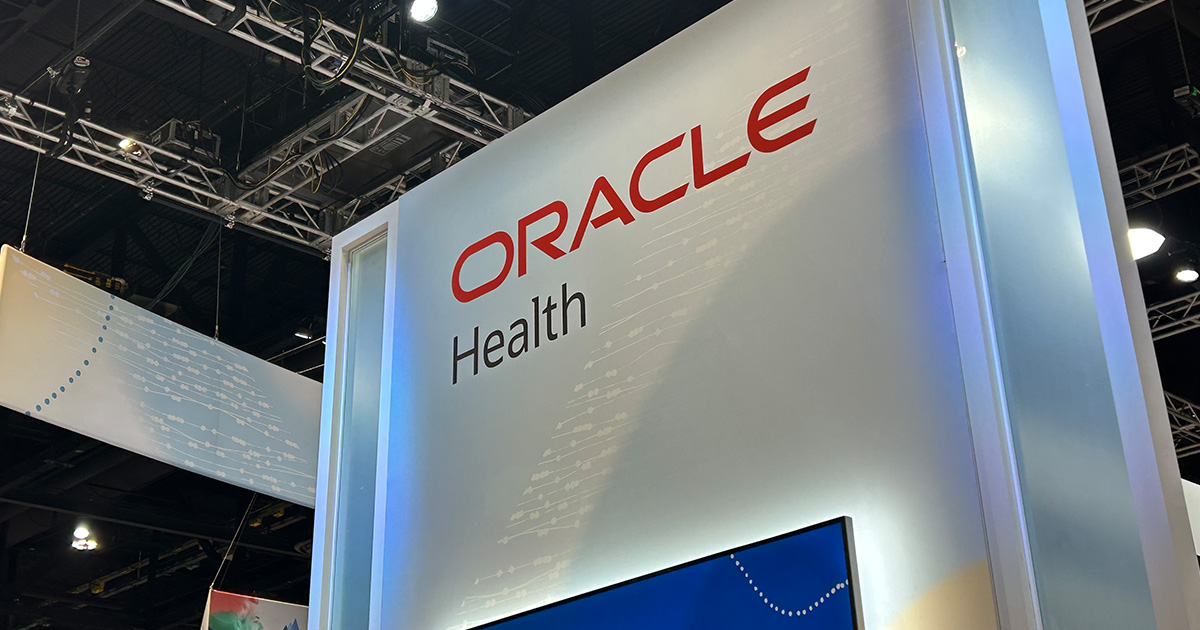It's fair to say that Linda Shanley has a rather full plate these days.
"We're a 600-bed hospital – we're two hospitals, actually: one's a rehab hospital – and right now we're going through an Epic implementation," said Shanley, vice president and chief information officer at Hartford, Conn.-based Saint Francis Hospital.
"We also have a very large PHO, with probably about 800 physicians," she added. "Approximately 200-plus are employed, and the rest are all community physicians. There are two larger groups: One is about 60 doctors and the other is 30; all the rest are of varying sizes, from one or two physicians, up to 10."
Across all those care settings, "we have about 24 different EMRs," said Shanley.
Put mildy, "That's a challenge."
And one more thing, just to add to the fun: At the same time as the hospital's Epic switchover, "We also decided to participate in the Medicare Shared Savings Program," she said.
Long story short, when it comes to aggregation of data for this nascent ACO, "there's a lot going on."
Thankfully, the Epic implementation piece is going well. When we spoke at HIMSS14 in Orlando, Shanley said the go-live was just over a month away, and she felt sufficiently confident the launch would be smooth that she could spare a few days to visit the conference.
"It's refreshing to see how it all comes together," she said. "We're training right now, in the midst of it, and it's really been unbelievable."
As for the ACO, setting up data exchange among so many disparate systems beyond the hospital has been more of a challenge.
"Ultimately we want everybody to be on the same EMR," said Shanley. "That journey is not going to happen overnight."
[See also: Enterprise HIE market poised to soar]
In the meantime, St. Francis is getting help from Orion Health, whose Collaborative Care for ACOs suite helps with "aggregating all the data together in a traditional HIE sense," she said.
"We needed to bring more than just (clinical) data together; we needed to bring the claims data in, and we needed to have a mechanism to look at patient data and be able to manage them from a care coordination standpoint," said Shanley.
"That's the whole thing: to be able to bring every piece of data together. A lot of the docs aren't on our EMRs. We have to be able to enter data and bring together lists – and work those lists so we can affect outcomes."
Even with help from the most robust care coordination tools, though, that can be easier said than done. Shanley said one of St. Francis Care's acute challenges is "finding where all the data is.
"A lot of the docs are on all these different EMRs -- and some are still on paper," she said. "Sometimes patients get care outside of the system, that's where the claims data become very useful: If someone goes to, say, CVS to get their flu shot, the doc may never know that. At least you get that in the claims data."
Also, "not all clinicians or users of an EMR document the same way," she said. "And a lot of the EMR vendors are not as giving with their data, as far as being able to extract it out of the systems."
Orion's tool "shows you which data elements you're missing," said Shanley. "You have an exception report so you can go through and see what you have to find; you're not just looking willy-nilly, you know what's out there."
[See also: ACO start-ups in IT-buying mode]
That data sifting has represented a "huge development project" between St. Francis and Orion, she said. "There have really been growing pains sometimes. You fix this thing, and then something else goes astray. But we made it."
True interoperability continues to elude complex health organizations such as St. Francis, but "I think we're getting there," said Shanley. Still, it's "big challenge" making two dozen different EMRs try to talk to each other. "Each one is a separate interface that you have to work through, and what amount of data is really coming out of all these EMRs."
Being able to match and make the most of the data that exists is yet another issue. "Even with what we've learned with enterprise master patient index," she said.
"At St. Francis our EMPI duplicate rate is about 4 percent, which is really clean, considering what some other people are going through. But we're leaving off some parts of the market that we really need, like post-acute care, and skilled nursing facilities and patient-generated data. We're getting there, and that's a good thing, but we're still missing pieces."
This is not an unsolvable problem, said Suzanne Cogan, Orion's vice president of sales and client relationships.
"The interoperability standards are there, by virtue of the fact that we have our own integration engine, and we have hardware appliances that can be remote, and practices can typically do things quite efficiently with CCDs," said Cogan.
"But as Linda said, you've got such a plethora of vendors -- and each one of them charges and often a pretty high fee to actually create an outbound interface," she added. "It becomes not so much a standards barrier, but a cost barrier, especially to smaller practices."
Toward that end, Stage 2 meaningful use has actually dovetailed, rather than conflicted, with St. Francis' ACO strategy, said Shanley.
[See also: Interoperability 'taking so darn long']
"It's dovetailing because it's allowing us to do – and this is one of the strategies we're still trying to figure out – the direct messaging piece," she said. "We want to make it useful for the clinician."
Still, there are so many complications, even when it comes to a relatively simple means of communications like the Direct Project. "There's a lot of regulations now," said Shanley. "For instance, Orion can be the (health information service provider). But a lot of HISPs won't talk to other HISPs because they're not DirectTrust certified.
"From my position, I have to look back and say, 'What's the best strategy for me, to get through this next meaningful use stage, but still support my clinicians getting the easiest way to get their messages through, and how many address books do I want to keep up to date?' she said.
"Especially in my situation, where you have so many EMRs, you're trying to get them to MU Stage 2 and they have no idea what that means," she aded. "The providers are really challenged with Stage 2."
Still, helping even non-employed docs with Stage 2 is worthwhile for the large goal of care coordination, said Shanley -- as frustrating as enabling data exchange among such a motley list of vendors can be.
"I have one that just upgraded to McKesson -- they've been on McKesson Practice Partner, so they have to upgrade, and they've got RelayHealth – and then I've got Allscripts, which is hospital-owned outpatient, and I've got to use MedAllies with them," she said, by way of example. "And then I've got Orion. We've wanted to go through Orion, but we're still figuring that piece out. Then I'm putting in Epic. I know I can talk Epic-to-Epic. And I've got Epic Care Everywhere, and I've got to be able to talk to that.
"I've been through it several times to try to get it straight in my head," said Shanley. "Do I try to strategically look at this long term? Or do I need to do something short-term to meet meaningful use that is not the optimal solution? You have to sit there and weigh all this. And no one is making it easy for you."


